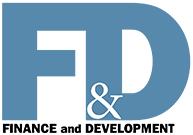Crystal Ball
Finance & Development, September 2014, Vol. 51, No. 3
Kalpana Kochhar, Yan Sun, Evridiki Tsounta, and Niklas Westelius
A look at trends and uncertainties can help prepare for future economic challenges
“All predictions are wrong; that’s one of the few certainties granted to mankind.” —Milan Kundera

The global economy is undergoing a series of transformations that subject the future to considerable uncertainty, complexity, and unpredictability. Some transformations, like recovery from the global financial crisis, are cyclical; others, like demographic developments and the rapid increase in interconnectedness, are longer term and more structural in nature. These transformations interact in shaping the future, making extrapolation from the past an increasingly unreliable lens for peering into the future.
With the global financial crisis in the rearview mirror, an effort was initiated at the IMF last year to better tailor the Fund’s near-term focus on managing transition from the crisis to long-term perspectives. The work focused on identifying underlying currents and associated uncertainties that will mold the world we live in over the coming decades. Understanding their nature, speed, and—importantly—how they interact is crucial to preparing for future challenges and being alert to risks that could lead to new crises.
Of course, selecting which trends and uncertainties could shape the future global economy is daunting too. Aided by extensive internal and external consultations, the IMF staff team narrowed its focus to a critical few: demographics, diffusion of power, resource and environmental sustainability, interconnectedness, and income inequality. These were deemed particularly relevant for the IMF and its membership thanks to their potential large impact on the sustainability and stability of economic growth. They should not be interpreted as predictions about the future, and their evolution over time is also uncertain.
Demographic pressures
The world population is projected to increase to more than 8 billion by 2030 and to age at an unprecedented rate; for the first time in history, by 2020 children younger than 5 will be outnumbered by people 65 and older (NIA, 2007). In all regions except sub-Saharan Africa the elderly population will increase more than the working-age population, driving up age-related costs. At the same time, increased life expectancy means people can work longer. Some emerging markets, including China, may get old before they get rich owing to a declining population. But many developing economies, especially in sub-Saharan Africa and south Asia, will have to generate job opportunities for new labor market entrants amid rapidly increasing populations. Changing demographic patterns could also affect individual countries’ saving and investment and alter future global financial and labor flows.
A single global power? Not anymore
Global power is shifting from advanced to emerging market and developing economies, while nongovernmental organizations, multinational corporations, and cities are gaining national and international influence.
Advanced economies accounted for two-thirds of world GDP (in purchasing-power-parity terms) in 1992 but their contribution fell to less than half of global GDP by 2012 (IMF), with cities emerging as power centers—about 60 percent of global GDP today is generated by 600 urban centers (McKinsey, 2011).
But the dynamics of future power shifts are far from clear. The trajectory of emerging market and developing economies’ growth may be uneven, and the rising power of cities and nonstate actors such as multinational corporations and nongovernmental organizations could be put to the test. Whether the diffusion of power will help or hurt the global community’s ability to cooperate and address common problems remains to be seen. The shift of power from advanced to emerging market and developing economies offers a great opportunity to preserve global stability and enhance resilience and growth potential as more countries have a stake in shared global prosperity. At the same time, multiple players with diverse interests may also result in more conflicts and instability, or policy inertia and inaction.
Saving the planet
Higher and more volatile commodity prices during the past decade have renewed concerns about natural resource scarcity. Signs of a changing climate are also on the rise, with a projected impact well beyond country borders; the 12 warmest years on record have occurred since 1997, along with rising sea levels and melting glaciers (GISS, 2012). Growing global population and income will put increasing pressure on natural resources such as water and the environment if corrective actions are not taken now. Resource scarcity and environmental degradation will likely have a disproportionate impact on developing economies. Technological innovation has helped in the past but may not be sufficient to address the balancing act between supporting growth and protecting the environment. Timely and coordinated measures are needed now to avoid potentially dire consequences, which are likely to occur in the second half of this century.
All in the same boat
The global financial crisis was a wake-up call. The world is becoming more and more integrated in an increasingly complex manner, facilitating the spread of both prosperity and risks. Trade and financial links between countries have grown sharply, with world export volume now six times higher than two decades ago (IMF). Financial intermediaries have expanded through networks of subsidiaries and branches, and corporations have become global at an increasing pace. Labor flows have also increased: today, more people than ever—232 million—live abroad, 33 percent more than in 2000 (UN, 2013). Technology has broadened access to information and enhanced the speed of data transmission and processing.
Interconnectedness is likely to continue to grow, but there is significant uncertainty about its pace, nature, and implications for risk. While beneficial to the global economy, it can lead to the buildup of systemic risk, facilitate the transmission of shocks, and raise the potential cost of crises. It is unclear whether our understanding of interconnectedness will catch up with its ever-changing pace and nature.
Sharing the pie
Income inequality has risen significantly over the past few decades. Globalization and technological advances have lifted billions out of poverty but also contributed to the rise in income inequality. There are many reasons to believe that income inequality will persist, given its inertia and the interplay between inequality and political polarization, which makes consensus on redistributive policies all the more difficult. Persistent inequality threatens growth and macroeconomic stability.
Challenging futures
How will these trends and uncertainties evolve, interact, and shape the future global economy? With the help of scenario analysis—a management tool frequently used to construct alternative futures for strategic purposes—it is not difficult to construct a future where tensions and risks arise in different dimensions, develop more suddenly, and build on each other, challenging our ability to deliver continued stability and shared prosperity. For example, interconnectedness and diffusion of power could point to a future that is both increasingly integrated and politically and socially fragmented, with profound implications for policy cooperation at different levels. Moreover, economic growth could raise living standards, but it could also inflict environmental, social, and political costs, undermining some of its benefits and thereby sustainability.
The complexity and uncertainty of the future present opportunities and challenges to the IMF and its membership. Global public goods—including, for example, a bigger global financial safety net in a more interconnected world and a global solution to climate change—will be indispensable. The IMF must continue applying its unchanging mandate—safeguarding global economic and financial stability—to these changing circumstances and demands.
The American civil rights activist Malcolm X noted that the future belongs to those who prepare for it today. In a time of change and transformation, this is perhaps more true than ever. ■
Kalpana Kochhar is Deputy Director, Yan Sun is Deputy Unit Chief, and Evridiki Tsounta and Niklas Westelius are Senior Economists, all in the IMF’s Strategy, Policy, and Review Department.
References
Goddard Institute for Space Studies (GISS), 2012, Surface Temperature Analysis (New York).
International Monetary Fund (IMF), World Economic Outlook database (Washington, various years).
McKinsey Global Institute, 2011, Urban World: Mapping the Economic Power of Cities (Seoul, San Francisco, London, Washington).
National Institute on Aging (NIA), 2007, Why Population Aging Matters: A Global Perspective (Washington).
United Nations (UN), 2013, International Migration and Development: Contributions and Recommendations of the International System (New York).


